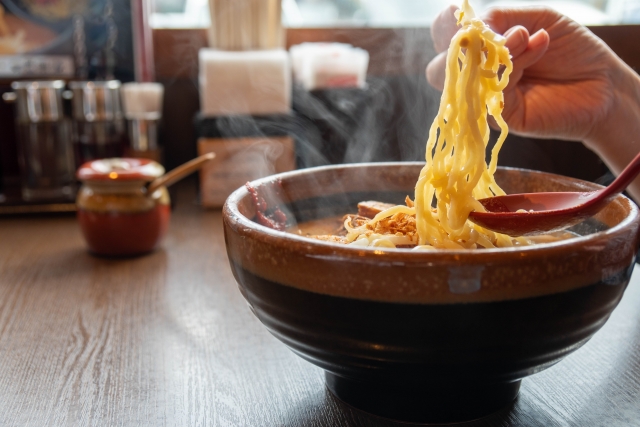The popularity of ramen, a hearty bowl of noodles in flavorful soup, has transcended beyond the borders of its native land, Japan, and captured the hearts of food lovers worldwide.
This guide aims to prepare you for that experience, delving into the types of ramen, regional variations, and tips on how to maximize your enjoyment of this iconic Japanese dish.
Ramen Types and Variations
Ramen is not a one-size-fits-all dish. There’s an incredibly diverse range of ramen types, primarily classified based on their soup base and the toppings used.
Types of Ramen Based on Soup Base
Here are the four main types of ramen categorized by their soup base:
- Shoyu Ramen (soy sauce): This is probably the most traditional form of ramen, with a brown, clear broth based on chicken and vegetable (and sometimes fish or beef) stock with plenty of soy sauce added for a savory, umami flavor.
- Shio Ramen (salt): Shio ramen is a pale, clear, yellowish broth made with plenty of salt and any combination of chicken, vegetables, fish, and seaweed.
- Miso Ramen: Miso ramen is relatively new to the scene but has become very popular. It has a rich, nutty, slightly sweet broth made with miso and oily chicken or fish broth.
- Tonkotsu Ramen (pork bone): Tonkotsu ramen hails from Kyushu, Japan’s southernmost island, and is a rich, cloudy pork broth.
Variations by Region
Just as in Italy where pasta sauces change from region to region, so does the flavor of ramen in Japan. Here are some notable regional variations:
- Sapporo Ramen: Known for its rich miso base and topped with sweet corn, butter, and bean sprouts.
- Tokyo Ramen: Often made with shoyu soup and has thin, curly noodles topped with bamboo shoots, kamaboko (fish cake), and spinach.
- Hakata Ramen: Known for its tonkotsu base with thin, straight noodles, often topped with green onions, pickled ginger, and sesame seeds.
Choosing Where to Eat Ramen

While you can find ramen in many types of restaurants in Japan, for the best experience, head to a specialty ramen restaurant, known as a “ramen-ya“.
These range from tiny establishments with just a counter and a few seats, to larger, more elaborate places.
Step 1: Spotting the Ramen-ya
In general, you can gauge the quality of a ramen-ya by the length of the queue outside.
Japanese people value good food and are willing to wait for it, so a long line usually indicates a restaurant worth trying.
Step 2: Ordering Ramen
In most ramen-ya, you will order your ramen via a vending machine near the entrance.
The machine has buttons with pictures or descriptions of each dish. Choose your ramen, insert your money, press the corresponding button, and collect the ticket that is dispensed. Hand this ticket to the staff, and they will prepare your ramen.
Step 3: Enjoying Meal
Once your steaming bowl of ramen arrives, it’s time to dig in! Don’t hesitate to slurp your noodles – it’s a sign that you’re enjoying the meal and is considered a compliment to the chef.
Japanese Pronunciation and English Transliteration
In Japanese, ramen (ラーメン) is pronounced with two syllables: “ra” as in “radio” and “men” as in “menu”.
In English, it is usually spelled as “ramen”, keeping the pronunciation as close to the original as possible.
FAQs about Ramen in Japan

We will answer frequently asked questions about ramen.
Can vegetarians eat ramen?
Traditionally, ramen broth is made from animal bones and it often contains slices of pork.
However, with the rise of vegetarianism and veganism, some ramen-ya offer plant-based options. Look for “yasai ramen” (vegetable ramen) on the menu.
Is it rude to finish all the ramen broth?
Not at all! In fact, it’s considered a compliment to the chef if you finish all your food, including the broth.
Is it acceptable to ask for extra noodles?
Yes, it is. This is called “kaedama” and for a small additional cost, you can get an extra serving of noodles to enjoy with the leftover broth.



comment